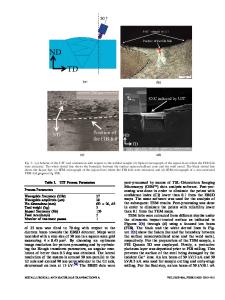Flow Stress Evolution in Further Straining of Severely Deformed Al
- PDF / 1,348,636 Bytes
- 10 Pages / 593.972 x 792 pts Page_size
- 58 Downloads / 461 Views
CONSIDERING the importance of the high strength to weight ratios in metals applications, excellent mechanical properties can be obtained from the ultrafine grained and nanostructured materials produced by severe plastic deformation (SPD) methods.[1,2] Among several SPD methods, multi-directional forging (MDF) and equal-channel angular pressing (ECAP) are used in the bulk forming of materials.[3–5] For versatile applications of metallic sheets, accumulative roll-bonding (ARB), asymmetric rolling (ASR), and constrained groove pressing (CGP) are prevalent.[6–8] Understanding the dominant strengthening and softening mechanisms in SPD processes can help to achieve the desired properties for a variety of applications. Generally, in SPD, strength reaches a saturation level during deformation. A number of studies have been conducted to overcome this barrier using the rolling process after SPD, which results in enhancement of mechanical properties after saturation.[9–11] By applying a plane-strain condition, further rolling leads to higher strength in the SPD process by lowering the thickness of
V. CHARKHESHT and M. Department of Materials Science of Technology, Azadi Ave., [email protected] Manuscript submitted June 3,
KAZEMINEZHAD are with the and Engineering, Sharif University Tehran, Iran. Contact e-mail: 2018.
METALLURGICAL AND MATERIALS TRANSACTIONS A
elongated grains.[10] Although metallurgical approaches have been mostly used in explaining strength behavior, less attention has been paid to interpreting this behavior using constitutive equations. Therefore, using dislocation-based models can combine solid-mechanics with a theory-based dislocation approach to predict flow stress variations precisely.[12] Different dislocation-based models have been used for prediction of the strain hardening behavior of flow stress.[12–18] Among these models, Estrin et al.[18] suggested one (ETMB) that can approximate flow stress considering both hardening and softening mechanisms throughout the implementation of large strains. This model assumes the metallic material as a two-phased cellular structure comprised of cell interiors and cell walls.[18] In this regard, the evolution of dislocation density due to straining can explain the flow stress behavior in various strain-hardening stages up to a flow-softening step and illustrate the stress saturation phenomenon. In recent studies, the ETMB model has properly described the mechanical behavior of materials processed by ECAP, ARB, and CGP.[19–24] In this work, to determine the effect of straining after SPD on the flow stress, the ETMB model was used to approximate the development of dislocation density corresponding to the CGP, as an SPD method, and subsequent rolling, as a further straining process. Accordingly, basic mechanical models based on strain and strain rate were combined with the dislocation-based equations. After calculation of theoretical
variations, the predicted dislocation density and flow stress evolutions were compared with the experimental results obtained from tensile t
Data Loading...











